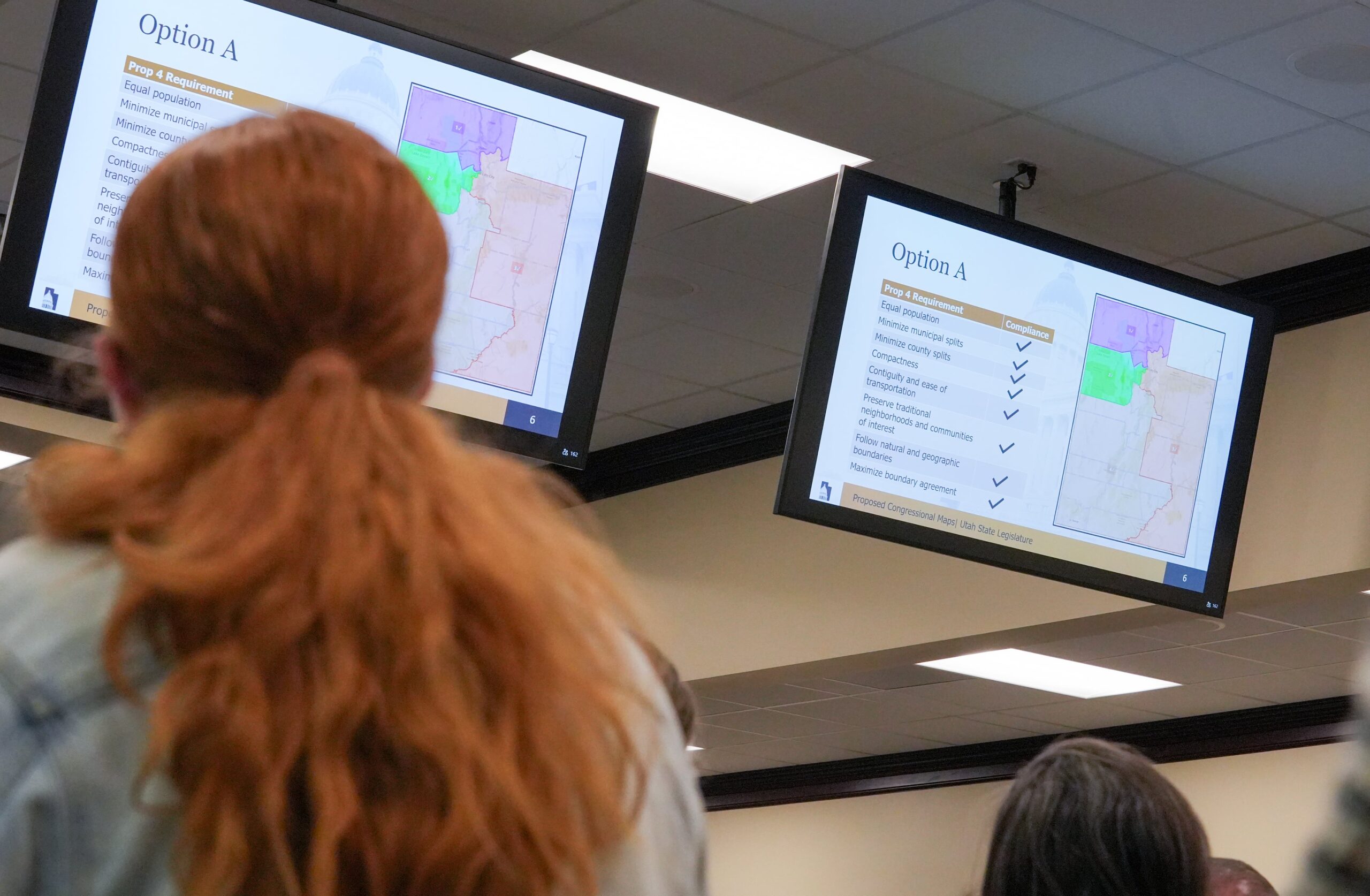The Utah Republican Party has abandoned its attempt at an “indirect initiative” to repeal Proposition 4’s ban on partisan gerrymandering after Lt. Gov. Deidre Henderson warned that the effort faced “likely constitutional problems.” Instead, the party is now pursuing a different approach: gathering about 141,000 valid signatures from across the state to place a repeal of the Better Boundaries initiative on the 2026 ballot, allowing voters to decide its fate.
More than two weeks ago, Utah Republican Party Chair Rob Axson, along with a group of Republican activists including former U.S. Rep. Rob Bishop and Attorney General Derek Brown, launched their indirect initiative bid — the first time any group had tried this tactic. This legislative initiative required over 70,000 valid signatures, roughly half the number needed for a regular ballot initiative. If successful, it would have forced the Legislature to take an up-or-down vote on repealing the 2018 anti-gerrymandering initiative.
Last year, the Utah Supreme Court ruled that the Legislature violated citizens’ constitutional right to make law through the initiative process when it effectively repealed the Better Boundaries legislation in 2021. Despite this, Republicans hoped that a strong signature drive and voter support could overcome the court’s limitation.
However, plaintiffs fighting to keep the Better Boundaries provisions argued in court that the legislative initiative is not authorized by the Utah Constitution, and therefore cannot replace the direct ballot initiative process that is constitutionally protected. Lt. Gov. Henderson agreed with this view.
“Based on recent court rulings, Lt. Gov. Henderson expressed concern that there were likely constitutional problems with the indirect initiative because it asked for legislative action to repeal Proposition 4,” Henderson’s spokesperson, Amy Iverson, said in a statement. Henderson’s assessment was made after consulting lawyers from the attorney general’s office, who work under Brown.
For any initiative or referendum to be eligible for signature gathering in Utah, it must first be deemed constitutional by the lieutenant governor. Given Henderson’s concerns, the Republican Party decided to pivot to the more traditional route: trying to get the Better Boundaries repeal directly on the 2026 ballot.
“[Henderson] had some concerns that the courts would agree with the plaintiffs,” Axson explained. If Judge Dianna Gibson chose to “double down on her previous inappropriate ruling,” the party risked being back at square one.
“We decided to take control of what we have in our control,” Axson said.
On October 24, the Republican Party formally withdrew their legislative initiative proposal and filed for their new repeal effort on the same day, this time adding U.S. Sen. Mike Lee as one of the sponsors.
The party will reach a major milestone this Monday by holding a required series of seven public meetings across the state. However, none of these initial meetings will be held in Salt Lake or Davis counties — which together house roughly half of Utah’s population.
Axson explained the reasoning: “Given the time crunch, we had to take the spaces we could get on short notice.” He also noted that the law mandates these meetings be held in specific regions, and the party aimed to ensure meetings were within a 45-minute drive for Utahns statewide.
That said, Axson said the party plans to announce an additional seven meetings next week, including at least one in Salt Lake or Davis County, once the details are finalized.
After completing the first round of public meetings, organizers will start gathering signatures. The signatures must be submitted to county clerks for verification no later than February 15. County clerks then have 21 days to validate the signatures.
At the same time, the party continues to push for a voter referendum to challenge the congressional map recently adopted by the Republican-controlled Legislature and submitted to the court. If Republicans gather about 141,000 signatures by November 15, the new congressional boundaries would be put “on hold.” This uncertainty could leave the state unclear about which district boundaries will be used for the 2026 midterm elections.
While this referendum push remains in play, Axson emphasized, “It has never been our priority. That was protecting our options and our rights.”
Because signature verification takes time, the process may not be complete until December or January. Lt. Gov. Henderson has previously told the court that county clerks need an approved map no later than November 10 to adequately prepare for the 2026 election.
Henderson warned that the GOP’s various tactics have created “chaos and confusion” in what is already a complex redistricting process.
https://www.sltrib.com/news/politics/2025/11/01/utah-redistricting-gops-effort/

